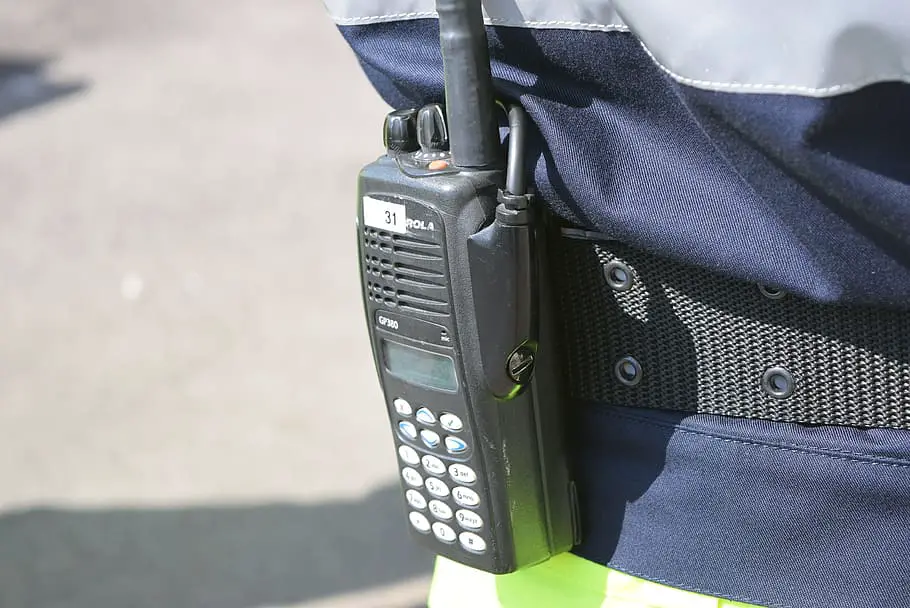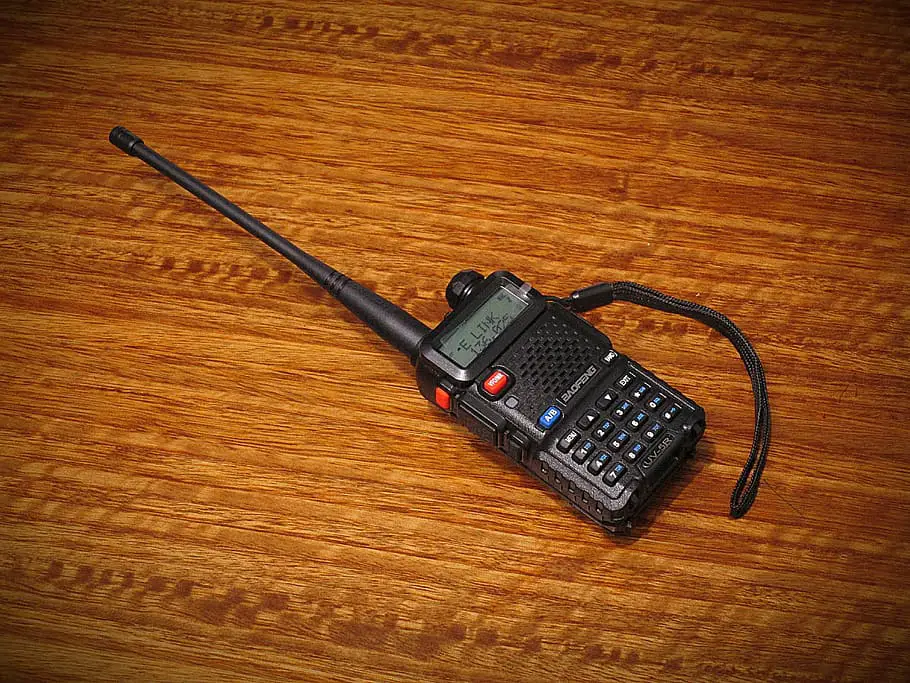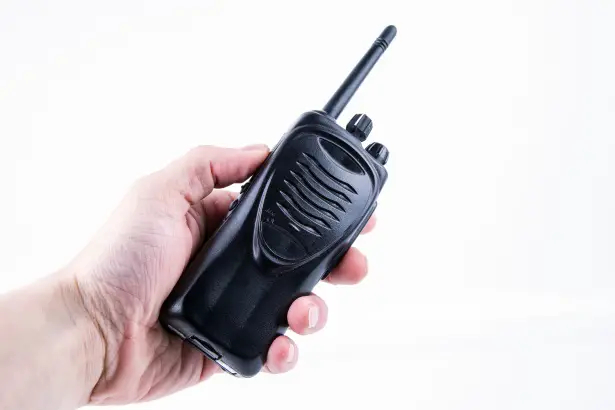Search no more for a two-way radio guide! These useful devices are necessary for construction, security, event management, and emergency services. Let’s explore their uses!
For construction crews, these radios provide clear communication with long-range capabilities. No more shouting or relying on spotty mobile reception. They’re designed to withstand harsh conditions.
Regarding security operations, two-way radios offer discreet earpieces and voice activation for secure communication.
Event managers rely on these radios to keep staff connected across different areas. Plus, they can be programmed with specific channels.
For emergency services, two-way radios offer quick coordination between responders. Durable designs endure challenging environments and features like GPS tracking aid in locating team members. Push-to-talk functionality saves time in life-saving ops.
For the best two-way radio experience:
- Know range limitations
- assign call signs or codes
- have standard operating procedures
- invest in high-quality headsets
Understanding Two-Way Radios

To understand the importance of two-way radios for construction, security, event management, and emergency services, let’s dive into this section. We’ll explore why these industries rely on two-way radios as a solution.
From keeping communication streamlined in construction sites to ensuring efficient coordination in emergency situations, these sub-sections will shed light on the vital role of two-way radios.
Why Two-Way Radios are Important for Construction, Security, Event Management, and Emergency Services
Two-way radios are essential in construction, security, event management and emergency services. They offer fast, reliable communication in challenging environments.
In construction, two-way radios make it easier to stay in touch across different parts of a site. This helps avoid accidents, speed up operations and solve issues fast.
Security teams rely on two-way radios to communicate during patrols or emergencies. This instant connection lets them react quickly to incidents, work together with colleagues and escalate situations if needed. For events or sensitive locations, two-way radios are essential for keeping order and protecting people.
Event managers use two-way radios to coordinate logistics during a concert or manage crowd control at a sporting event. This eliminates long phone calls or runners, so they can get real-time updates and create a better experience.
In emergency services, two-way radios help first responders communicate with dispatchers, sharing information without delays. This helps them provide effective assistance in critical situations.
To make the most of two-way radios, suggest regular training sessions, clear communication protocols and high-quality equipment with features like noise cancellation or signal encryption.
Features and Functions of Two-Way Radios
To make the most of your two-way radios, we’ll now dive into the features and functions that set them apart. Discover how these radios stack up in terms of range and frequency options, durability and weather resistance, battery life and charging options, and emergency communication features.
Let’s tackle each sub-section and find the perfect solution for your construction, security, event management, or emergency service needs.
Range and Frequency Options
Two-way radios depend on range and frequency options to function properly. These features determine the distances they can communicate over and which frequencies they use for transmissions.
Take a look at this table to see the range and frequency options of different models:
| Radio Model | Range (Miles) | Frequency Options |
|---|---|---|
| Model A | 10 | VHF, UHF |
| Model B | 20 | VHF, UHF |
| Model C | 30 | VHF, UHF |
Each radio model offers different range and frequency options. Users can pick the one that suits their communication needs best.
In addition to range and frequency, two-way radios have features like encryption capabilities, weather alerts, and noise-cancelling technology. These details make the devices more useful in many industries.
Be sure to choose a two-way radio with the right range and frequency for your needs. The right model will let you keep in touch even in challenging conditions or during emergencies. So don’t settle for less, make a wise decision!
Durability and Weather Resistance
Two-way radios are crafted with robust materials, such as reinforced plastic or metal, to survive falls and impacts. They are given an IP rating, meaning they resist water and dust.
Shock resistance is tested to make sure they can handle vibrations. Temperature tolerance also enables them to work in extreme temperatures. Ports and battery compartments are sealed for extra protection. Rainproof speakers and mics are a bonus, allowing clear communication even in the rain.
Some models even include GPS systems! For optimal durability, search for models that meet military standards (MIL-STD). Don’t miss out on getting a reliable radio – choose weather-resistant and durable.
Battery Life and Charging Options
Battery life and charging options are key when it comes to two-way radios. Let’s explore this further.
Lithium-ion batteries can provide up to 15 hours of use. Charge them using USB or wall outlets.
Nickel-metal hydride batteries offer around 10 hours of use. They usually come with desktops or car chargers.
Alkaline batteries last for up to 8 hours. Easily replace them when needed.
Some models may have solar power or hand-cranked chargers for emergencies or outdoor use.
Choose the battery life and charging options that are right for you. Don’t miss out on effective communication!
Emergency Communication Features
Two-way radios with emergency communication features are essential for effective and timely communication during critical situations. Push-to-talk functionality, emergency alert buttons, GPS tracking, dedicated emergency channels, and noise-cancelling technology are all key features that can save lives and ensure safety.
Advanced two-way radios may offer additional emergency features like lone worker monitoring, man-down detection, and integration with safety devices. The demand for two-way radios with enhanced emergency capabilities is increasing; a report by Transparency Market Research expects the market to reach $3.5 billion by 2027. Emergency communication features in two-way radios play a major role in enabling effective response coordination during critical times.
How to Choose the Right Two-Way Radio for Your Needs

To choose the right two-way radio for your needs, assess communication requirements, consider budget constraints, evaluate durability and portability, and examine battery life and additional features.
Assessing your communication needs is crucial, and considering your budget will help you make a cost-effective choice. Look for radios that can withstand the demands of your environment and are easy to carry. Also, consider battery life and any extra features that may enhance your communication experience.
Assessing Communication Requirements
Assessing your communication requirements is key when choosing the right two-way radio. Let’s break it down:
- The range is the max distance the radio can send/receive signals.
- Channels/frequencies determine the available bandwidth for conversations and must be considered.
- Power options, such as rechargeable or alkaline batteries, need to be evaluated too.
- Durability is essential, especially if you use the radio in harsh conditions or outdoor activities.
To show the importance of assessing requirements: a group of hikers went into a remote area and got into trouble. Luckily, they had assessed their requirements beforehand and chose durable two-way radios with long-range capability. This enabled them to communicate with emergency services and stay safe.
To choose the best two-way radio, assess your unique needs. Consider range, channels/frequencies, power, and durability.
Considering Budget Constraints
Regarding budget constraints and two-way radios, there are factors to consider. You must determine your specific needs for communication. This helps to identify essential features for the intended use.
A table is provided below to assist with making an informed decision. It outlines different options based on budget:
| Budget | Range | Battery Life | Durability |
|---|---|---|---|
| Low | Short | Moderate | Fair |
| Medium | Medium | High | Good |
| High | Long | Very High | Excellent |
You must also consider long-term costs, such as maintenance, replacement parts, and accessories. Investing in a higher-quality radio upfront may be more cost-effective than replacing cheaper models.
Research and compare prices from different vendors to get competitive offers within the budget. Assess the value and quality of each option to make an appropriate choice without sacrificing functionality or reliability.
Consumer Reports conducted a study. It showed that investing in a reliable two-way radio can provide savings in emergency situations. Even with budget constraints, it is important to prioritize durability and performance when selecting a radio.
Evaluating Durability and Portability
When selecting a two-way radio, durability and portability are musts. To make an informed decision, it is key to assess these aspects accurately. Let’s get into evaluating the durability and portability of two-way radios.
A table can help us examine the criteria:
| Criteria | Description |
|---|---|
| Build Material | Check if the radio is made of sturdy material |
| IP Rating | Assess the protection level against dust/water |
| Shock Resistance | Consider the resilience to accidental drops |
| Size/Weight | Evaluate the device’s compactness and weight |
| Battery Life | Examine the duration of battery usage |
By considering each criterion, you can get a better understanding of the durability and portability of two-way radios. Additionally, there are other details worth considering.
For instance, the material used in constructing the radio. Some radios use strong materials like polycarbonate or metal alloys that give greater protection from rough handling or harsh environments.
Now, a fun historical fact related to durability and portability in two-way radios. During World War II, soldiers relied heavily on portable hand-held radios to stay connected. These radios were integral in communication among troops, providing a lifeline in tough times.
Getting a two-way radio with optimal durability and portability is essential for smooth communication. So, weigh up these factors carefully before making your choice.
Examining Battery Life and Additional Features
Battery life and features are essential when selecting a two-way radio. Let’s analyze these aspects in more depth.
Examining Battery Life & Features
To choose wisely, it is necessary to consider battery life and features offered by different two-way radios. Here we present a table to help you compare the options.
| Radio Model | Battery Life (hours) | Additional Features |
|---|---|---|
| Model A | 10 | Weather-resistant |
| Model B | 8 | GPS tracking |
| Model C | 12 | Emergency alert |
Note that battery life can vary with usage. Think about your needs and usage to assess this part.
Now let’s look at some details not mentioned before. When checking battery life, opt for long-lasting batteries to ensure communication during outdoor activities or emergencies.
As for features, weather-resistant radios are suitable for outdoor adventures. GPS tracking helps with precise location identification, making it safer for groups. Emergency alerts notify others when help is needed.
A historic incident related to this topic is during WWII. Two-way radios with extended battery life helped military units communicate across great distances. This improved tactical coordination on the battlefield.
When picking a two-way radio, battery life and features must be considered. Evaluate these factors to ensure reliable communication and added functionality.
Practical Tips for Using Two-Way Radios Effectively

To use two-way radios effectively for construction, security, event management, and emergency services, follow practical tips to ensure smooth communication. Dive into proper radio etiquette and communication protocols, maintenance tips, and troubleshooting common issues. Master these sub-sections, and you’ll wield your radios like a pro in no time!
Proper Radio Etiquette and Communication Protocols
Radio etiquette and protocols are musts for two-way radios. Clear and concise communication keeps operations flowing and avoids miscommunication.
Standardized phrases like “over” and “out” to end transmissions and pause before speaking. Identify your call sign or name for prompt recipient identification.
Active listening is key to understanding transmissions. Acknowledge messages to show respect. Use the phonetic alphabet to reduce misinterpretations. Secure channels protect sensitive information. And, stay calm during emergencies to help responders assess situation’s severity.
Maintaining and Caring for Your Two-Way Radios
Give your two-way radios the care they need! To ensure optimal performance and longevity, follow these tips:
- Wipe away dust and debris with a soft, lint-free cloth.
- Inspect batteries for corrosion or damage. Replace as needed.
- Keep dry and away from moisture.
- Store safely when not in use.
- Avoid exposure to extreme temperatures.
- Update software regularly.
Compatible accessories, such as antennas and batteries, can also up your radio’s performance. Train your team on its proper handling and operation too.
Maintaining and caring for your two-way radios isn’t just about keeping them clean. Regular upkeep extends their lifespan and helps maintain clear communication. Consider investing in protective cases or covers for extra protection.
Troubleshooting Common Issues
Interference:
– Radio interference can block communication.
– Keep radios away from electronic devices to reduce them.
Battery Life:
– Batteries can run out quickly.
– Ensure they are fully charged and carry spares.
Range Limitations:
– Radios may not have long range.
– Use repeaters or higher-powered radios for longer distances.
Audio Quality:
– Poor audio quality can lead to troubles.
– Adjust the volume and check the microphone for obstructions.
Channel Congestion:
– Too many users can cause confusion.
– Use designated channels and switch to less crowded ones.
Equipment Damage:
– Accidents can damage radios.
– Handle with care and use protective cases.
Also, follow manufacturer instructions and prioritize safety in all troubleshooting efforts.
One day, on an important mission, our team encountered interference with our two-way radios. We searched for a solution and found a nearby construction site was the cause. We moved to an area with no interference and accomplished our mission. This taught us the importance of finding potential interference sources beforehand.
Best Practices for Maximizing Two-Way Radio Performance
To maximize your two-way radio performance, follow these best practices. Optimal antenna placement, avoiding interference and channel congestion, and regular equipment testing and maintenance are the critical solutions.
Positioning the antennas strategically, managing interference, and keeping your devices in top-notch condition will ensure seamless communication in construction, security, event management, and emergency services.
Optimal Antenna Placement
When placing your two-way radio system, there are three key factors to consider:
- A higher mounting height can improve coverage and range.
- Avoid placing the antenna near tall buildings or any obstacles obstructing the signal path.
- Having a metal surface underneath aids in signal reflection and amplification.
It is also important to minimize cable losses and avoid interference from nearby electronic devices to get the best performance. An IARME study revealed that antennas placed at higher heights perform significantly better than lower ones. So, think carefully about the optimal setup for maximum signal strength and better communication!
Avoiding Interference and Channel Congestion
Radio interference and channel congestion can hinder two-way radio performance. Follow these 4 steps to optimize their functionality!
- Utilize Frequency Coordination: Coordinate frequencies with other users in your area. This avoids overlapping signals and reduces interference.
- Employ Encryption Techniques: Encrypt transmissions to prevent unauthorized access and minimize interference.
- Select the Appropriate Channel: Choose a free channel when communicating. Busy channels cause congestion and reduce clarity.
- Conduct Regular Equipment Maintenance: Check for damaged or faulty components. Clean and update software for optimal performance.
These practices consistently enhance two-way radio performance and minimize interference. Environmental factors, like buildings or geographical features, can affect radio reception. Adjust for these to mitigate interference further.
World War II radio operators faced challenges due to interference and congestion caused by enemy electronic warfare tactics. This led to the development of advanced techniques to optimize radio communications. These lay the foundation for today’s best practices in maximizing two-way radio performance.
Regular Equipment Testing and Maintenance
To maximize two-way radio performance, regular equipment testing and maintenance is essential. Carry out checks on batteries, antennas and cables to find any issues. Run regular range tests to assess coverage areas and make adjustments.
Clean and inspect radios to keep dirt and debris away. Stock spare parts like batteries and antennas to replace broken or worn-out components fast. Update firmware and software to make use of new features.
Train radio users to handle and care for them properly. Employ frequency management techniques to reduce channel interference. Be proactive in testing and maintenance to avoid unexpected failures.
By following these best practices, two-way radios can offer reliable communication capabilities and extended lifespan.
Conclusion
Gain an understanding of two-way radios with the guide! Used in construction, security, events, and emergency services, these devices are a dependable communication tool. We discussed their features and advantages for each industry.
For example, construction workers can benefit from their strength and reach. Security staff can respond quickly and coordinate better with two-way radios. Event managers rely on them to organize large-scale events, enabling employee communication across areas. Emergency services use them to save lives with efficient communication during critical times.
But there are unique details about two-way radios. Some models offer more advanced features such as GPS and text messaging. Think about your specific needs and choose a radio that meets them.
Don’t miss out on the benefits of two-way radios. Enhance productivity, safety, and performance with this technology. Invest today and experience the difference!
Additional Resources and Recommendations
Unlock the full potential of your two-way radios! Invest in noise-cancelling headsets, belt clips/holsters, spare batteries, and antenna boosters. Explore online forums for tips and product recommendations. Plus, stay informed with the latest tech news – sign up for newsletters or follow industry influencers on social media.
Don’t delay – take action today! Make two-way radio communication even better!
Frequently Asked Questions
FAQ: Guide to Two-Way Radios for Construction, Security, Event Management, and Emergency Services
Q: Can I use the same two-way radio for multiple industries?
A: Absolutely! Two-way radios are versatile and can be used in various industries like construction, security, event management, and emergency services. They are designed to meet the communication needs of different professionals.
Q: What range should I look for in a two-way radio?
A: The range you need will depend on the environment you work in. If you’re in a small construction site, a few miles of range may be sufficient. However, for larger events or emergency services, you might need radios ranging from several miles or even more. Be sure to consider your specific requirements.
Q: Are two-way radios easy to use?
A: Absolutely! Two-way radios are designed to be user-friendly and straightforward. They typically have intuitive controls and buttons, making them easy to operate even for non-technical users. Just a little practice, and you’ll be communicating seamlessly.
Q: Can two-way radios be used in noisy environments?
A: Yes, they can! Many two-way radios come with features like noise cancellation and background noise suppression. These technologies help ensure clear communication even in loud construction sites or crowded event venues.
Q: Are two-way radios durable enough for rugged environments?
A: Absolutely! Two-way radios are built tough to withstand harsh conditions. They are designed to be rugged and durable, able to resist dust, water, and impact. You can rely on them to withstand the demands of construction sites, security operations, or emergency situations.
Q: Can I use two-way radios for both individual and group communication?
A: Yes, you can! Two-way radios offer the flexibility of both individual and group communication. Depending on your needs, you can choose to have one-on-one conversations or use features like group channels and push-to-talk to communicate with multiple team members simultaneously.


